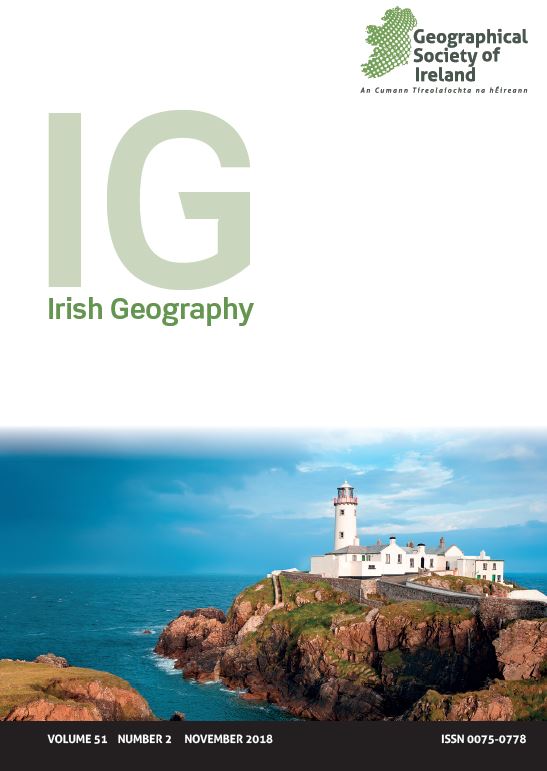A Rapid Assessment Framework for Irish Habitats: A Case Study of Machair Habitat Quality
DOI:
https://doi.org/10.55650/igj.2018.1372Abstract
Existing habitat condition assessments in Ireland lack a standardised, quantitative methodology and are often beyond the time constraints of monitoring staff. Therefore, there is a need to develop a framework that can rapidly assess habitats and provide a benchmark against which change can be measured. We reviewed existing national and international habitat assessments to develop a new rapid habitat assessment framework specific to Ireland. This framework uses 22 variables encompassing: (i) a pre-survey that considers the site within the context of the landscape; (ii) a structured field survey to measure physical and biological variables; and (iii) a site overview that considers site management variables to generate a quantitative site score. We tested our framework using Irish machair as a case study due to it being particularly vulnerable to rapid changes from both anthropogenic and climatic sources. Our framework scores matched 70% of the current three-tiered ‘traffic light’ designations established in the Habitats Directive and were within expected ranges. Our approach establishes a quantitative score that creates a benchmark against which we can measure future change and the identification of specific drivers of habitat change. The framework is a practical response to the lack of a unified approach to assessing and reporting habitat condition and will help Ireland meet monitoring requirements and determine the effect(s) of management/conservation efforts.Downloads
Published
2019-01-28
How to Cite
Gorman, T., Kindermann, G., & Morley, T. (2019). A Rapid Assessment Framework for Irish Habitats: A Case Study of Machair Habitat Quality. Irish Geography, 51(2), 205–228. https://doi.org/10.55650/igj.2018.1372
Issue
Section
Articles
URN
License
Authors who publish with this journal agree to the following terms:- Authors retain copyright and grant the journal right of first publication with the work simultaneously licensed under a Creative Commons Attribution License that allows others to share the work with an acknowledgement of the work's authorship and initial publication in this journal.
- Authors are able to enter into separate, additional contractual arrangements for the non-exclusive distribution of the journal's published version of the work (e.g., post it to an institutional repository or publish it in a book), with an acknowledgement of its initial publication in this journal.
- Authors are permitted and encouraged to post their work online (e.g., in institutional repositories or on their website) prior to and during the submission process, as it can lead to productive exchanges, as well as earlier and greater citation of published work (See The Effect of Open Access).


